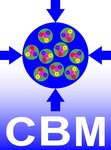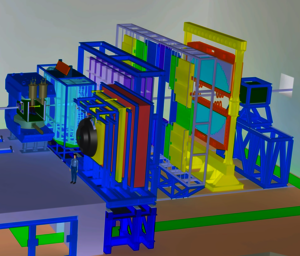
Compressed Baryonic Matter (CBM)
Welcome to the CBM division at GSI
The Compressed Baryonic Matter (CBM) experiment will be one of the major scientific pillars of the future Facility for Antiproton and Ion Research (FAIR) in Darmstadt. The goal of the CBM research program is to explore the QCD phase diagram in the region of high baryon densities using high-energy nucleus-nucleus collisions. This includes the study of the equation-of-state of nuclear matter at neutron star core densities, and the search for phase transitions, chiral symmetry restoration, and exotic forms of (strange) QCD matter. The CBM detector is designed to measure the collective behavior of hadrons, together with rare diagnostic probes such as multi-strange hyperons, charmed particles and vector mesons decaying into lepton pairs with unprecedented precision and statistics. Most of these particles will be studied for the first time in the FAIR energy range. In order to achieve the required precision, the measurements will be performed at reaction rates up to 10 MHz. This requires very fast and radiation hard detectors, a novel data read-out and analysis concept including free streaming front-end electronics, and a high performance computing cluster for online event selection. Several of the CBM detector systems, the data read-out chain and event reconstruction will be commissioned and already used in experiments during the FAIR phase 0. The unique combination of an accelerator which delivers a high-intensity heavy-ion beam with a modern high-rate experiment based on innovative detector and computer technology offers optimal conditions for a research program with substantial discovery potential for fundamental properties of QCD matter.

The CBM Division at GSI is significantly involved in the following activities:
- Design, development and construction of the Silicon Tracking System (STS) which is the key detector of the CBM experiment
- Software development, feasibility and performance studies, online/offline event reconstruction and selection
- Development of the front-end electronics for the time-of-flight detector
- Layout of the cave and its infrastructure
- Coordination of the CBM collaboration




